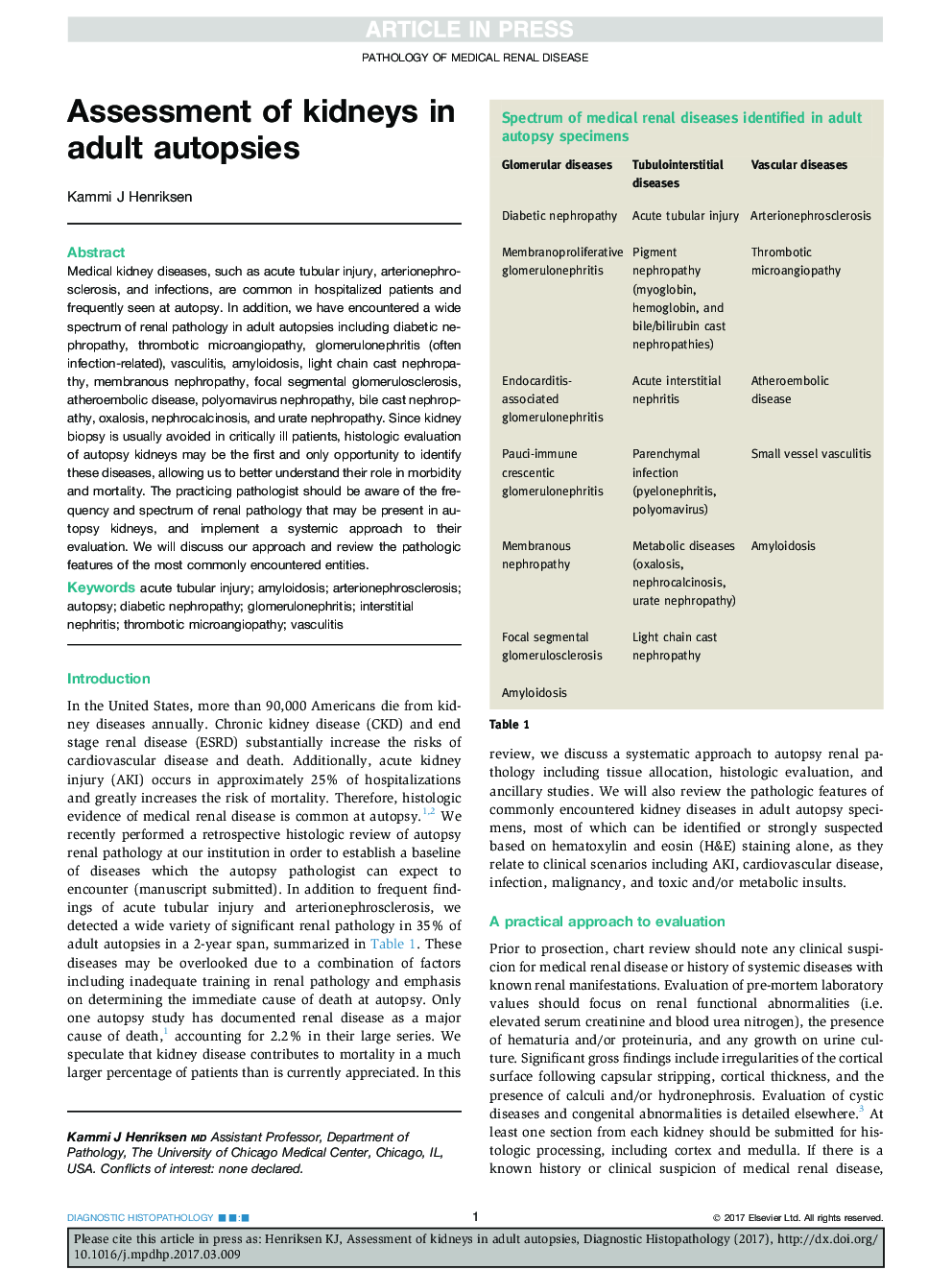| Article ID | Journal | Published Year | Pages | File Type |
|---|---|---|---|---|
| 5716031 | Diagnostic Histopathology | 2017 | 9 Pages |
Abstract
Medical kidney diseases, such as acute tubular injury, arterionephrosclerosis, and infections, are common in hospitalized patients and frequently seen at autopsy. In addition, we have encountered a wide spectrum of renal pathology in adult autopsies including diabetic nephropathy, thrombotic microangiopathy, glomerulonephritis (often infection-related), vasculitis, amyloidosis, light chain cast nephropathy, membranous nephropathy, focal segmental glomerulosclerosis, atheroembolic disease, polyomavirus nephropathy, bile cast nephropathy, oxalosis, nephrocalcinosis, and urate nephropathy. Since kidney biopsy is usually avoided in critically ill patients, histologic evaluation of autopsy kidneys may be the first and only opportunity to identify these diseases, allowing us to better understand their role in morbidity and mortality. The practicing pathologist should be aware of the frequency and spectrum of renal pathology that may be present in autopsy kidneys, and implement a systemic approach to their evaluation. We will discuss our approach and review the pathologic features of the most commonly encountered entities.
Keywords
Related Topics
Health Sciences
Medicine and Dentistry
Pathology and Medical Technology
Authors
Kammi J. Henriksen,
